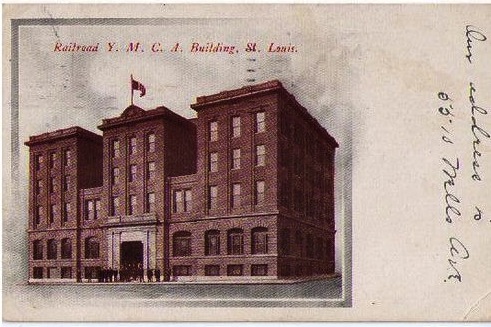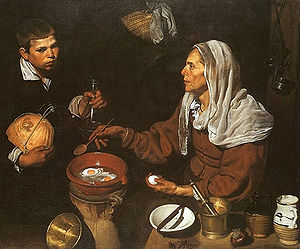Play along this weekend with Queens Writes! I’ll sadly be out of town, but I’ll jot down some notes in solidarity. Very cool effort from Newtown Literary.
-
Recent Posts
Archives
Categories
Meta
Play along this weekend with Queens Writes! I’ll sadly be out of town, but I’ll jot down some notes in solidarity. Very cool effort from Newtown Literary.

A list of sherries to try, found inside the pages of a used copy of Lawrence Durrell’s Justine I just pulled off my shelf. If only I had shopped before the blizzard hit.
In a follow-up to yesterday’s story on the artificial dimpling sweeping Paris, the Times notes that women in London, too, have taken to the trend. “The cost of making permanent dimples ranges from $26 to $56,” the paper reports in “Dimples at $26 apiece.” “The process usually lasts a fortnight. A small cut is made in the skin. The wound is then bound up and dressed daily until healed. The dimples most in demand are little depressions near the corner of the mouth, which show themselves when the owner smiles.”
Another, less permanent, method (from the September 1895 issue of The American Stationer) is described here:
I am drawn, again, to the oddities found in the Times Machine. For instance: Mrs. William A. Hall and her son Melvin took at 40,000-mile trip, visiting 33 countries (from England to Italy, India to Sumatra, China to the Philippines), in “Toured world in an auto.” According to the story, “They wore out 117 tires and burned up 5,000 gallons of gasoline, but suffered no serious mishaps.” Did they suffer minor mishaps? I sure would like to know, but the Times isn’t telling.
A somewhat alarming trend was sweeping Paris; women were having their cheeks artificially dimpled. “A number of specialists are at work making them in cheeks that are naturally rounded. Two kinds are supplied to order—weekly dimples that will last only some seven days, and permanent dimples.” But standards of beauty are fickle, remember, so “the former are preferred, as there is no knowing how long the fashion will last.”
A front-page story, “Swallows poison and dies in theater,” trumpeted the tale of a man who committed suicide at Proctor’s Theatre (“Women ushers in the orchestra saw a man staggering up the aisle, grasping the backs of seats, and tearing at his collar as if he were suffocating. Before they could reach his side he had stumbled into the women’s cloak room and fallen unconscious on the floor. … A partly emptied bottle of poison and a note to his wife was found.”)
But far more touching was the obituary of another man who had a rather dramatic end: “Van Biene, composer, dies on the stage” tells of a rather remarkable life. Auguste Van Biene, best known for composing and playing “The Broken Melody” (see YouTube video at top of post)—a song he retired, he said, because it otherwise would have driven him to a lunatic asylum—died on the stage of the Hippodrome in Brighton.
Van Biene collapsed after his performance, and “nobody in the audience thought it more than the prescribed dramatic finish to the scene. The stage manager, however, noticed unaccustomed realism about it, and the curtain was rung down more hurriedly than usual. When the stage manager went to the actor, he found he was past human aid.”
This wasn’t the first dramatic turn his life had taken: he was discovered by Sir Michael Costa at the age of 17, playing a cello in a gutter at Hanover Square. “I am hungry,” he explained, after Costa asked why a musician of such power was playing in so low a place. Costa took the boy home and gave him a place in the Covent Garden Orchestra; Van Biene reportedly returned to the streets to play “on every anniversary of his deliverance from starvation.”
Replay the haunting melody; perhaps not all that is broken need be fixed.
 Love was in the air on January 23, 1913, with much ado about the Gould-Shepard wedding (“Helen Gould weds amid happy omens”). This occasion was marked by a front-page story and a lavish spread on page 2.
Love was in the air on January 23, 1913, with much ado about the Gould-Shepard wedding (“Helen Gould weds amid happy omens”). This occasion was marked by a front-page story and a lavish spread on page 2.
Much of the society stuff was, quite frankly, lost on me, but I did find it amusing that the Times printed a list of gifts received by the bride and groom, a few of which I will faithfully record here. Gifts included the following:
“Weds former coachman” highlights the tale of Miss Helen Stickle, who married the family’s chauffeur against the family’s wishes. The Sybil-Branson relationship on Downton Abbey was practically ripped from the headlines! Apart from the Reverend George F. Mott Doremus, no one attended the ceremony.
Of course, not all matches are made in heaven. Mme. Lamberjack, the divorced wife of the managing director of a motor car company, was acquitted in her husband’s homicide (“Shot husband, acquitted”). “With material success, their happiness came to an end … [after M. Lamberjack began to remove his furniture from their residence], Mme. Lamberjack reproached him, and then shot him fatally with a revolver.”
Lamberjack was described as “of uncertain temper and excessively nervous”; the paper reports that “Two eminent physicians who examined her said that she was the victim of ‘Paris life’ and its harassing effect upon the nerves.”
In other crime news, “Bandits get $800, but overlook $5,000” — they raided a warehouse office but overlooked a safe open right in front of them. “The detectives were inclined to believe that the robbers were amateurs or at least men little versed in the use of firearms,” the paper notes. Stupid bandits are stupid; crime just doesn’t pay, does it.
 Sounds sexy, right? Right? Well, the Times Machine is here to disabuse you of that notion: In “New kind of club for working girls,” we learn about Gardenia Winthrop, who wants to use a $15,000 inheritance to create a space where young working women could mingle with boys. “We intend to select a large dwelling,” Gardenia said, near 40th St. and Fifth Ave., “for chafing-dish fun and the like. … The club will be open till midnight, and the rooms will be used just for talking, dancing, and other amusements.” (Above left, a Diego Velazquez painting depicts one kind of chafing-dish fun, but probably not the kind Gardenia’s referring to.)
Sounds sexy, right? Right? Well, the Times Machine is here to disabuse you of that notion: In “New kind of club for working girls,” we learn about Gardenia Winthrop, who wants to use a $15,000 inheritance to create a space where young working women could mingle with boys. “We intend to select a large dwelling,” Gardenia said, near 40th St. and Fifth Ave., “for chafing-dish fun and the like. … The club will be open till midnight, and the rooms will be used just for talking, dancing, and other amusements.” (Above left, a Diego Velazquez painting depicts one kind of chafing-dish fun, but probably not the kind Gardenia’s referring to.)
In a letter to the editor, one curmudgeon has a bitter complaint: the lack of escalators at the newly opened Grand Central Terminal. “We certainly have a grievance,” he writes, “in being obliged to climb steep, tiresome inclines … Even though these steep inclines are still to exist, they can as well be provided with moving sidewalks which will take us up and down these inclines without such a waste of physical effort.” A true fiasco!
Most other news is rote, but a teaser for a special report — “Starving America” — is rather alarmist (235,262 children murdered by foods wholly robbed of food values!). The politics of healthful food, it seems, is no flash-in-the-pan subject.

I suppose I’m what you would call approachable. Yesterday, three people stopped me to ask where they could catch the Q101 bus. I stuttered each time, gesturing inarticulately to the distance and apologizing for my ineptitude. I see buses pass, but I prefer to go by foot when I can.
Today, it was a man holding a single long-stemmed rose, wrapped in butcher paper. He dashed across 36th Avenue. “Miss, excuse me, miss?”
I yanked out my ear buds to listen.
“I’m so sorry to bother you, but could I use your phone to make a call?” He held out his phone to me. “I swear I won’t take it, my phone’s just out of battery and that bar over there only has an iPhone charger. But you can hold my phone and stand here while I make the call.”
“Is it local?” I suppose it didn’t much matter. I dislodged my phone from my pocket, my fingers already growing red in the cold.
“An iPhone. Jeesh. I swipe? Is that what I do? And how do I dial?” I helped him punch the numbers in. After a few false starts, he greeted his friend.
“Ay! I was just in the neighborhood and I ordered some food at this bar, that donkey place, you know the crazy one? They’re making me that big plate of food, you know, the big one? You’ve got to come help me eat it.”
I tried not to look at his face, as if that offered him some privacy.
“No, I’m calling from the sweetest girl’s phone. Mine ran out of battery. Anyway, Queens! If you’re around, you should come eat. I already had some falafel this morning and some of that meat on a stick, and now, well, the big thing of food is waiting for me. You’re not sure you can make it? I know, Queens, man.”
He pulled the phone from his ear and explained, “We’re from Ireland.” I smiled. His accent was faint.
“All right, well, it’ll probably take me about two hours to eat all this food. OK if I come around when I’m done? Smashing.” And then he handed the phone back to me. I hung up for him.
It was a few blocks to my apartment, and I half wanted to sit down and share a beer and some onion rings with this man, so chipper and appreciative. “You’re the best! I’m going to pass the good deed on!” he called at my back, and we went our separate ways.